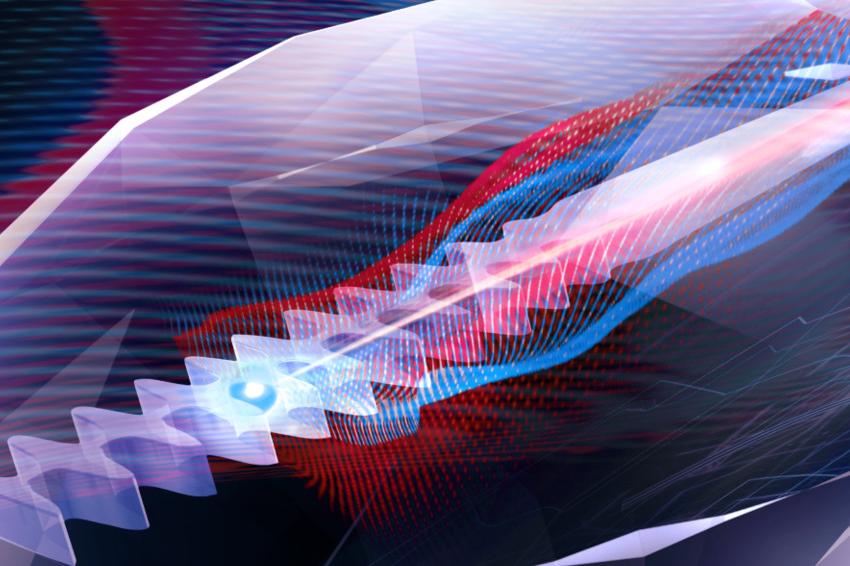Diamonds for the quantum internet
14.04.2023 - Nitrogen-vacancy defect centers in diamond nanostructures as quantum light sources.
Diamond material is of great importance for future technologies such as the quantum internet. Special defect centers can be used as quantum bits and emit single light particles that are referred to as single photons. To enable data transmission with feasible communication rates over long distances in a quantum network, all photons must be collected in optical fibers and transmitted without being lost. It must also be ensured that these photons all have the same frequency. Fulfilling these requirements has been impossible until now.
Researchers in the “Integrated Quantum Photonics” group led by Tim Schröder at Humboldt-Universität zu Berlin have succeeded for the first time worldwide in generating and detecting photons with stable photon frequencies emitted from quantum light sources, or, more precisely, from nitrogen-vacancy defect centers in diamond nanostructures. This was enabled by carefully choosing the diamond material, sophisticated nanofabrication methods carried out at the Joint Lab Diamond Nanophotonics of the Ferdinand-Braun-Institut, Leibniz-Institut für Höchstfrequenztechnik, and specific experimental control protocols. By combining these methods, the noise of the electrons, which previously disturbed data transmission, can be significantly reduced, and the photons are emitted at a stable communication frequency.
In addition, the researchers show that the current communication rates between spatially separated quantum systems can prospectively be increased more than 1000-fold with the help of the developed methods – an important step closer to a future quantum internet. The scientists have integrated individual qubits into optimized diamond nanostructures. These structures make it possible to transfer emitted photons in a directed manner into glass fibers. However, during the fabrication of the nanostructures, the material surface is damaged at the atomic level, and free electrons create uncontrollable noise for the generated light particles. Noise, comparable to an unstable radio frequency, causes fluctuations in the photon frequency, preventing successful quantum operations such as entanglement.
A special feature of the diamond material used is its relatively high density of nitrogen impurity atoms in the crystal lattice. These possibly shield the quantum light source from electron noise at the surface of the nanostructure. “However, the exact physical processes need to be studied in more detail in the future,” explains Laura Orphal-Kobin, who investigates quantum systems together with Tim Schröder. The conclusions drawn from the experimental observations are supported by statistical models and simulations, which Gregor Pieplow from the same research group is developing and implementing together with the experimental physicists. (Source: HU Berlin / FBH)
Links: Diamond Nanophotonics, Ferdinand-Braun-Institute, Leibniz-Institut für Höchstfrequenztechnik, Berlin, Germany • Integrated Quantum Photonics Group, Humboldt University Berlin, Berlin, Germany







